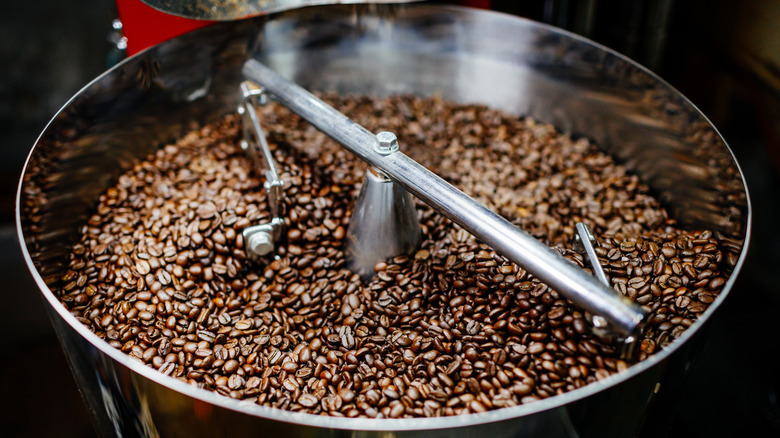Does Blend And Single-Origin Coffee Taste Any Different?
It's probably a part of your morning routine: We're talking about coffee. Whether it's making sure to stop on the way to work, or brewing a pot at home, most people start their day with a cup of Joe. And folks drink a lot of it. Coffee is a $95 billion a year business and its popularity doesn't seem to be waning (via Statista).
Coffee comes in many forms and flavors and it can be hard to navigate them all. From the different types of beans to how the beans are processed, there's a lot to learn before even brewing a cup. One thing you might find yourself wondering as you browse all the bags on the grocery store shelf is the difference between coffee that is single-origin and coffee that says it's a blend, as well as how the tastes compare. The short answer is that yes, there is a taste difference — and it's pretty easy to decipher.
Coffee blends are most common
Most of the coffee that you find on grocery store shelves are blends. That means exactly what it sounds like: what's inside the bag is a blend of beans from a number of different growing locations. There are lots of reasons for this, from it being more cost effective to a desire to build different flavors. Producing coffee blends allows companies to consistently put out a product and minimizes the impact of things like coffee rust, which has wreaked havoc on coffee crops over the last decade.
Even in the realm of coffee blends, there is further dichotomy. When it comes to creating coffee blends, there are two main camps. Some are blended before the beans are roasted. That means that while the beans may have different geographic origins, they are all going through a uniform roasting process and therefore have a smoother flavor profile. Alternatively, there are coffee blends where the beans are roasted separately before being blended, allowing each variant bean to also bring a different roast profile to the mix. Either way, the taste of coffee blends is more uniform and mild — they are more mellow on the palate.
Single-origin coffees are specific and rare
As opposed to coffee blends, single-origin beans come from the same place. Usually, these coffees will boast stronger flavor characteristics specific to their place of origin. For example, coffees that come from Africa tend to have dried notes of berries like cherry and currant, due to their tendency to be dry-processed (dried in the sun with the husk still on). Kona coffee, which comes from Hawaii, and has specific characteristics due to being grown in mineral-rich volcanic soil.
Single-origin coffees offer something beyond a specific flavor — they can often also connote exclusivity. With that exclusivity can come a steep price tag; according to Insider, single-origin coffees can top $30 a pound! Single-origin beans may also mean coffee that not only comes from a single region, but a specific farm within that region. While coffee blends may be the majority of what you find at your local coffee shop or grocery store, single-origin beans really offer an experience that is special and worth seeking out.


